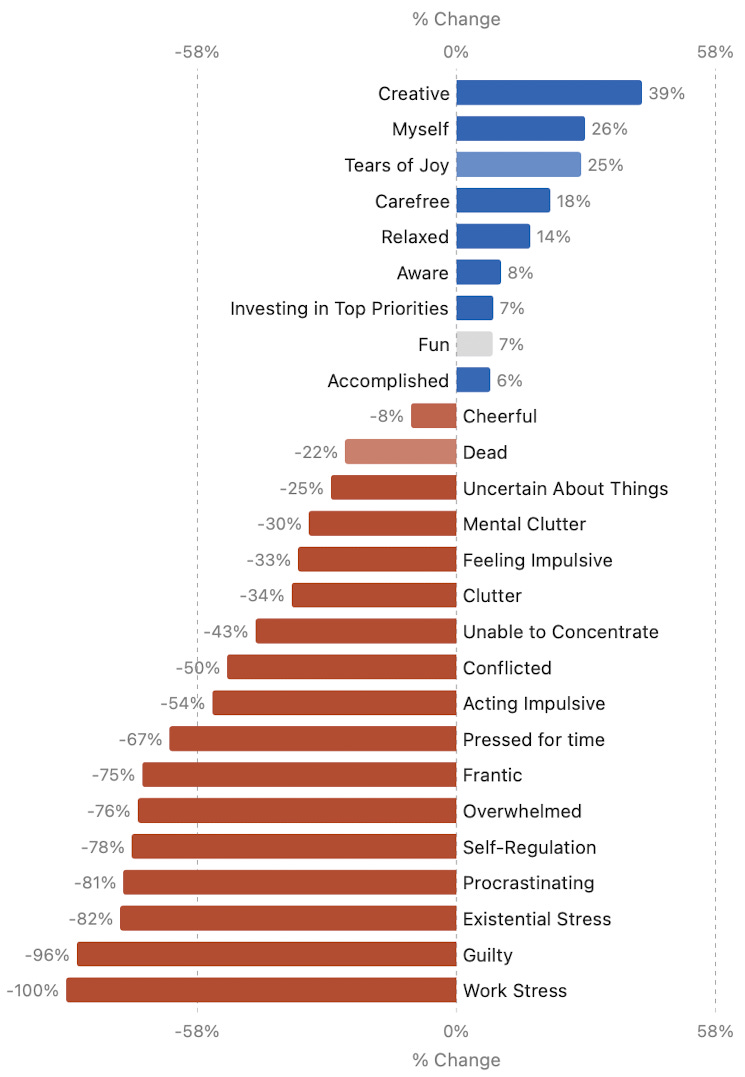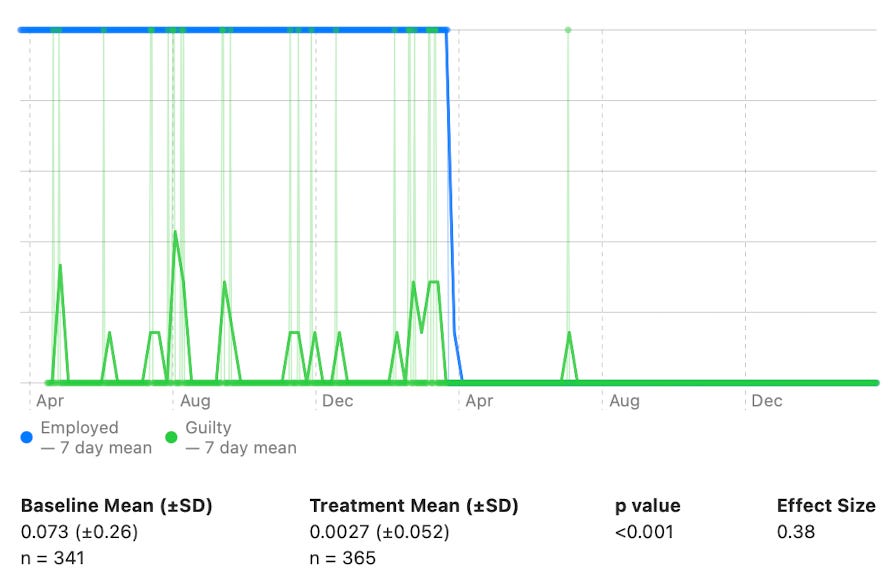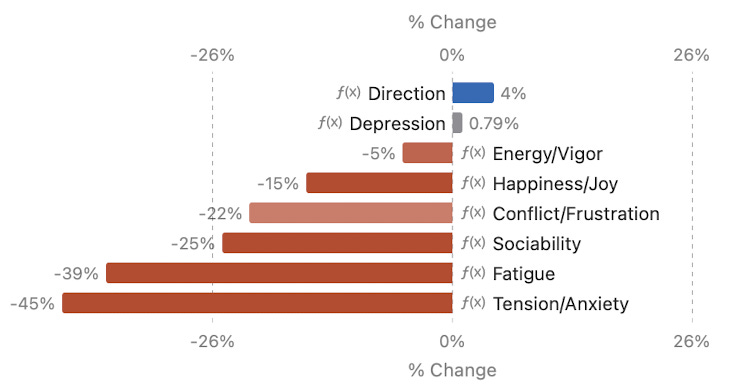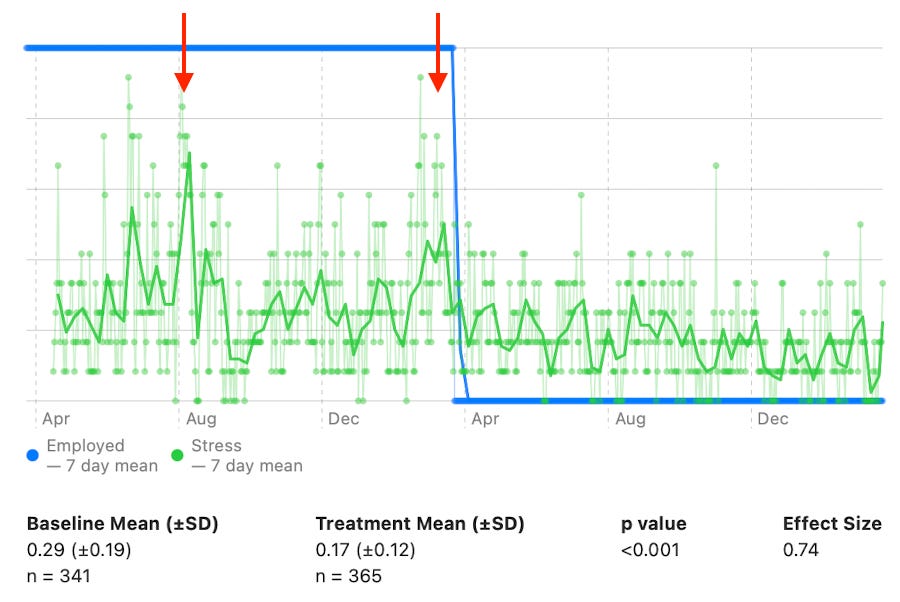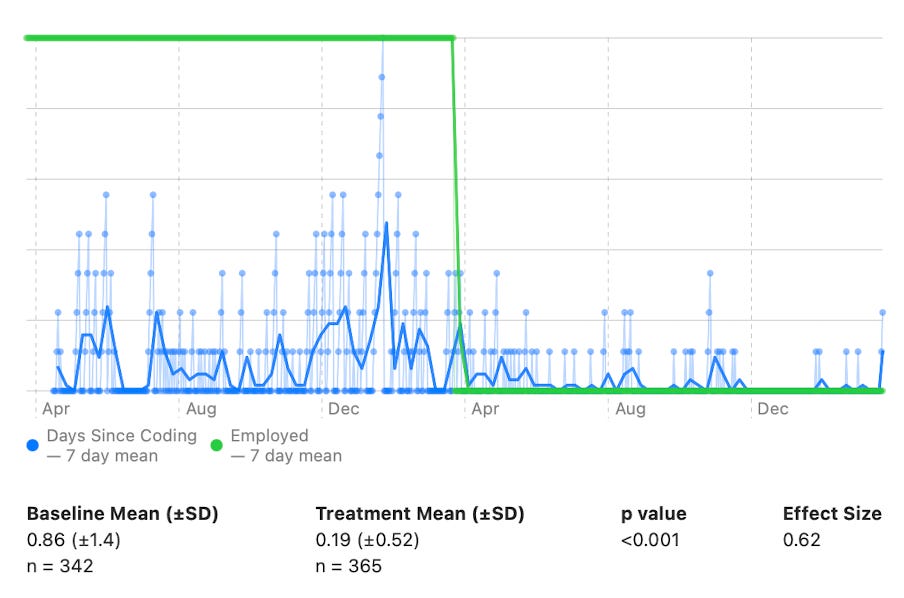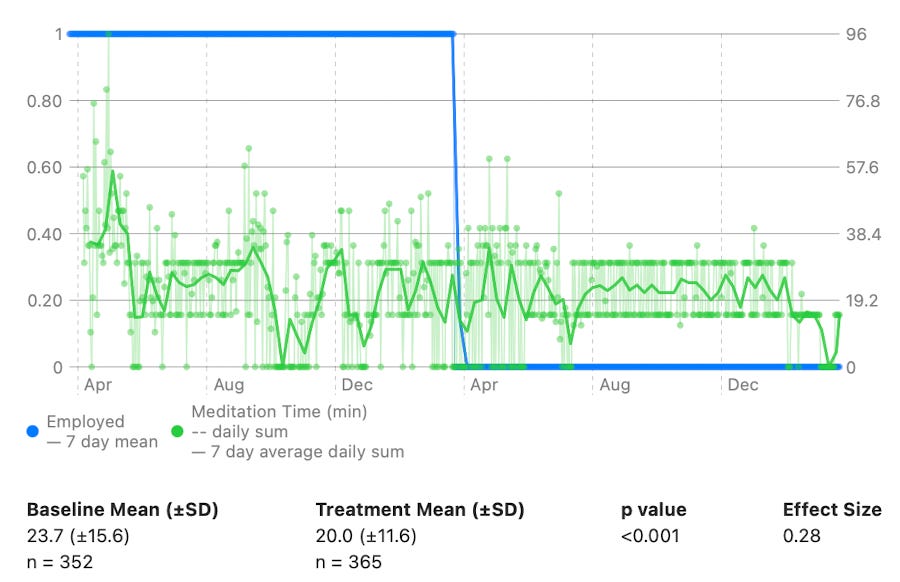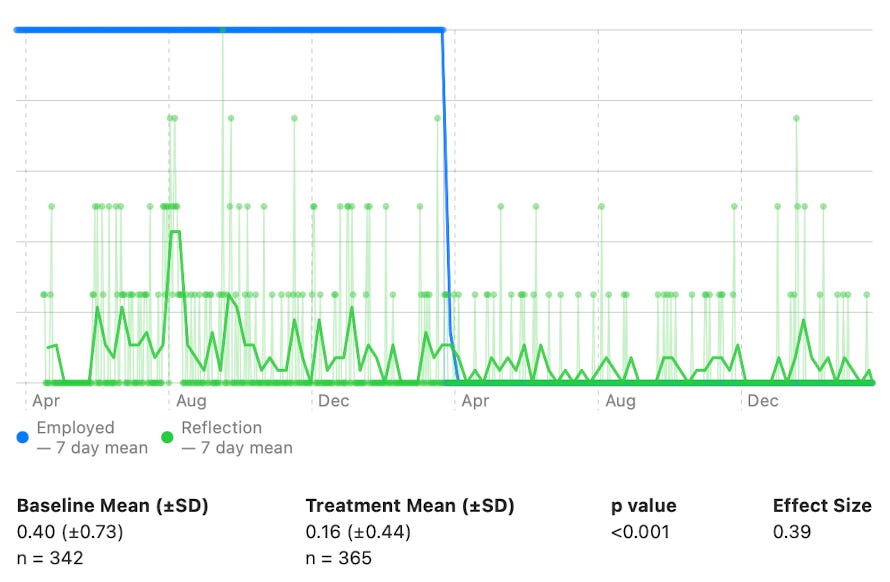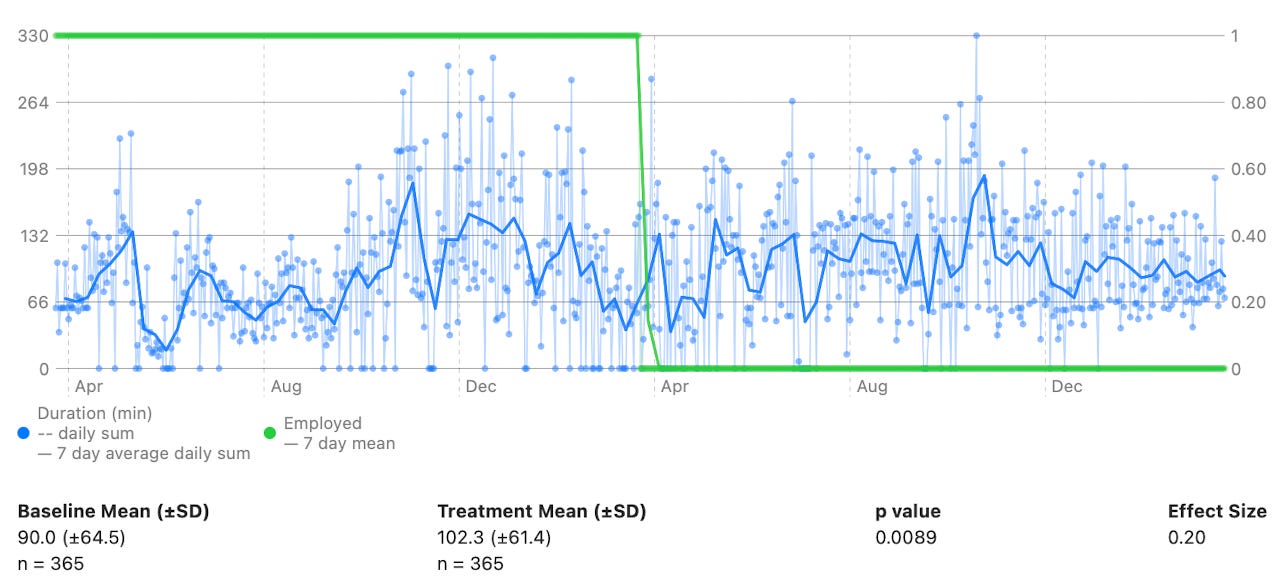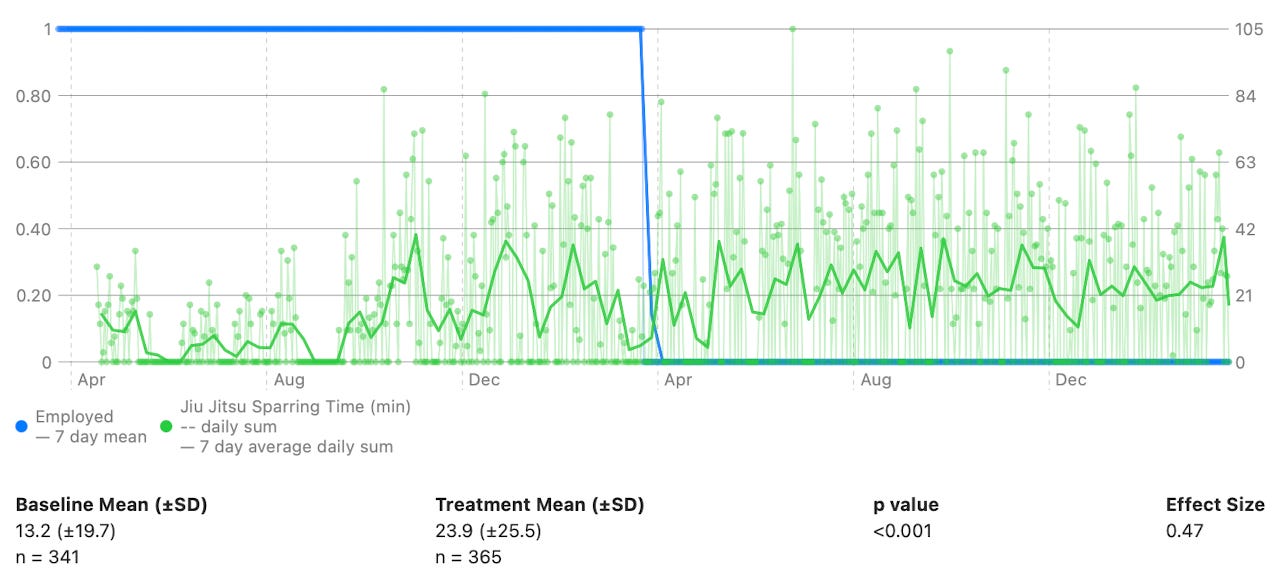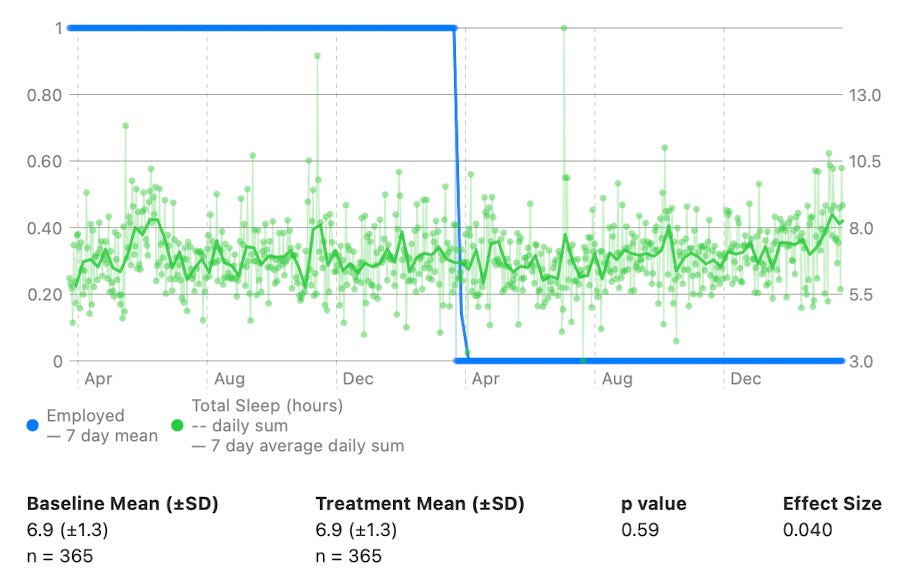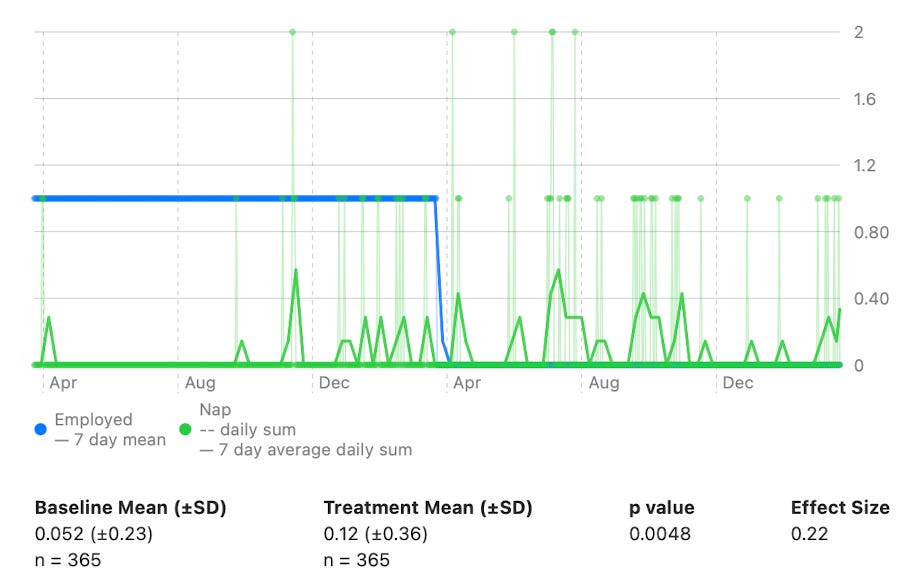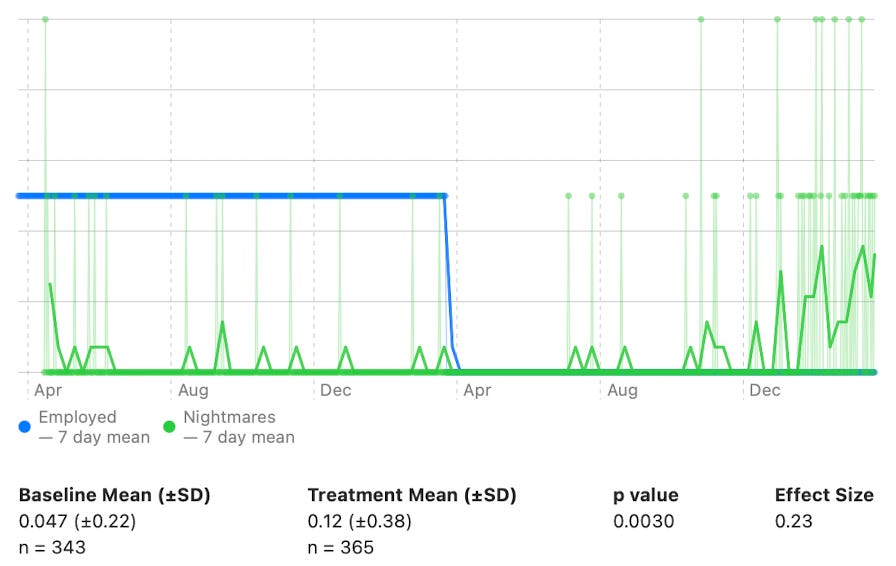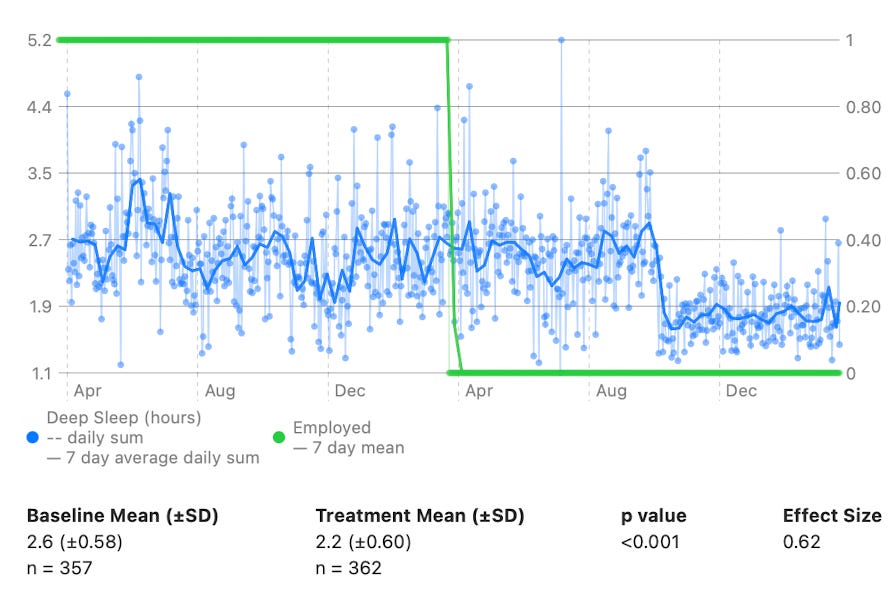Reflecting on a Year of Self-Employment
Try this one simple trick to decrease your work stress by 100%
On March 23rd, I celebrated my 1 year anniversary of self-employment. I quit my job in robotics to focus full-time on developing the Reflect tracking app.
When I quit, I had already been using Reflect to track a wide variety of things in my life, from mood, to symptom tracking, to jiu jitsu training sessions, for almost a full year. So I decided to take a look at what has changed in my life by comparing data from my year of self-employment to the year before.
Mood
Shortly after starting self-employment, I wrote out a document outlining various aspects of my ideal outcome for the upcoming year. Some of the bullet points:
☑️ I feel free
☑️ I am less stressed
I think one of the most striking differences is the massive decrease in guilt. While working for other people, I felt constant time pressure and the feeling that I wasn’t focusing on what really mattered to me. I had already been working on Reflect for several months during my spare time, and my interest in my day job was waning, resulting in a feeling of guilt on both ends. I felt guilty for not working on Reflect more, and guilty for no longer feeling as focused and invested in my job as my interest in it waned.
I used the Reflect metric formulas feature to define averages across multiple dimensions of mood1, and the results were mostly unsurprising. I felt more directed, less conflicted, less anxious.
What stood out to me is that both my happiness level and how social I was decreased. I’m not sure to what extent the change in sociability is simply due to removing a significant source of social interaction from my previous job, vs. feeling an acute sense of direction driving me to prioritize working on Reflect instead of being social.
Stress
My average overall stress level decreased significantly. While highly correlated to Tension/Anxiety, this metric represents an average of my subjective ratings of various sources of stress, like physical illness stress, family stress, work stress, existential stress, etc.
The first red arrow shows a peak in stress when I was first seriously considering quitting my job, and the second arrow marks when the decision was made final.
Activities
Writing Code
Despite having a primarily software focused job before, I was far from actually writing code every day, since my role involved team leadership responsibilities, customer support, and other tasks. Writing code was something I craved to do more often as it was one of the most fulfilling aspects of my work.
I used a metric formula with the Days Since operator to count the stretches of time where I wasn’t writing code, and this value decreased by 77% during my year of self-employment; I ended up writing code almost every day.
Meditation
Overall, I spent less time meditating, but my meditation was more regular due to running an extended experiment on meditation in Reflect.
Reflection
❌ I devote more time to reflection about my life trajectory and do things like more regular daily/weekly reviews
Overall, this was much more a year of execution than reflection, though there were aspects of more long-term planning of my life trajectory that cropped up towards the end of the year. I tracked daily time spent on reflection on a subjective 0 to 4 rating scale, and this decreased by 58% while self-employed.
However, this number only relates to time I spent journaling or planning, and doesn’t capture the increase in reflection that occurred simply as a consequence of developing and using Reflect. I regularly spent time introspecting and reviewing my data when presented with weekly and monthly reports, planning and reviewing experiments, and otherwise exploring relationships between different variables in my life.
Interest and Obligation
☑️ My level of perceived obligation in life decreases significantly
My overall level of perceived obligation in life decreased by 35%, and my engagement in areas motivated primarily by interest increased by 6%. I initially started tracking these after seeing this tweet by Naval Ravikant:
I noticed that as my employment-related obligations ended, I became a lot more sensitive to other sources of obligation in my life. When a medical appointment represents the need to step away from your job for an hour, it might not be so bad if you don’t really want to be working during that time. But if it comes at the cost of working on something you really care about, it’s much more of an imposition.
Training
My daily strain as measured by Whoop consistently increased; so did my workout duration. I increased my average training load of 1.5 hours per day by 12 extra minutes.
☑️ I have unlimited time to train BJJ
☑️ I have more time to keep up a consistent PT and lifting schedule
I almost doubled my time spent on jiu jitsu, and took less forced breaks due to injuries. I think part of this was due to having more time to keep up a consistent targeted rehab/pre-hab routine.
Sleep
❌ I sleep more
This didn’t pan out. My total sleep duration measured by Whoop remained remarkably constant throughout the entire two-year period, averaging 6.9 hours per night both before and during self-employment.
However, the number of naps I took increased by 126%, due to having a more flexible schedule where I could set my own hours.
The number of nightmares I had went up by 152%, with most of the increase occurring in recent months. I hope this trend doesn’t continue.
Wearables Can Be Misleading
Looking at my Oura sleep data showed an overall 16% decrease in deep sleep, with a sharp drop in deep sleep starting in October 2024, coinciding with my increase in nightmares. Oura also reported an increase in REM sleep around the same time.
However, that turned out to be a pure coincidence. After some investigation, I found this was simply a result of a change in Oura’s sleep algorithm.2 There was a similar algorithm update in Whoop which shifted all my workout heart rate zone data and made historical comparisons meaningless.3
Summary
Overall, about 75% of my ideal outcomes for self-employment ended up becoming a reality, and only 11% didn’t end up happening. It’s not a path for everyone, but after years of working on self-tracking in my spare time I was convinced I wanted to invest fully in developing Reflect into a product that is useful both for myself, and our growing user base.
As an example, Tension/Anxiety is the daily average of individual metrics tracked on a 0 to 4 rating scale on a daily basis: Nervous, Frantic, Afraid, Pressed for time, Uneasy, Conflicted, Dreading things, Restless, Tense, Anxious and Stressed.
The Oura app showed the algorithm update in the tags section when viewing my deep sleep trends over time, and many other users experienced unexpected changes in their data.
Whoop changed their algorithm to use the Heart Rate Reserve (HRR) method, which includes your resting heart rate in addition to your max heart rate to determine heart rate zones. See Whoop’s documentation for more detail.




